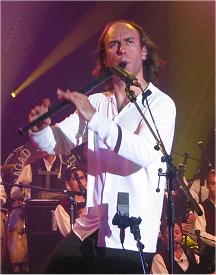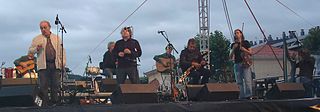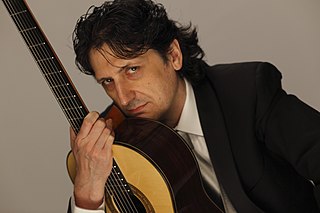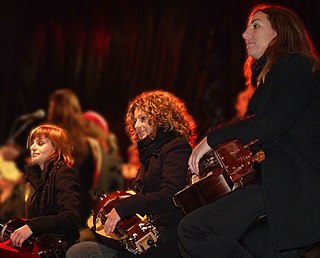
The music of Spain has a long history. It has played an important role in the development of Western music, and has greatly influenced Latin American music. Spanish music is often associated with traditional styles such as flamenco and classical guitar. While these forms of music are common, there are many different traditional musical and dance styles across the regions. For example, music from the north-west regions is heavily reliant on bagpipes, the jota is widespread in the centre and north of the country, and flamenco originated in the south. Spanish music played a notable part in the early developments of western classical music, from the 15th through the early 17th century. The breadth of musical innovation can be seen in composers like Tomás Luis de Victoria, styles like the zarzuela of Spanish opera, the ballet of Manuel de Falla, and the classical guitar music of Francisco Tárrega. Nowadays commercial pop music dominates.

The Galician gaita is the traditional instrument of Galicia and northern Portugal.
Northwest Iberia traditional music is a traditional highly distinctive folk style, located along Spain's north-west Atlantic coast, mostly Galicia and Asturias, that has some similarities with the neighbouring area of Cantabria. The music is characterized by the use of bagpipes.

Carlos Núñez Muñoz is a Galician musician and multi-instrumentalist who plays the gaita, the traditional Galician bagpipe, Galician flute, ocarina, Irish flute, whistle and low whistle.

Susana Seivane Hoyo is a Galician gaita (bagpipes) player. She was born in Barcelona, Spain, into a family of well-known Galician luthiers and musicians, the Seivane family, whose workshop is the Obradoiro de Gaitas Seivane. She started her musical career at the age of three. Guided by her father Álvaro Seivane and influenced by skilled bagpipers such as her grandfather Xosé Manuel Seivane, Ricardo Portela and Moxenas, she is notable in the bagpipe world and the world of traditional Galician music for synthesizing the "enxebre" style of the ancient bagpipers while creating her own style including other musical influences.

Milladoiro is a music band from Galicia. Often compared to the Chieftains, it is among the world's top Celtic music groups.
Tejedor is a folk music group from Avilés, Asturias, Spain, consisting originally of three siblings. Eva left the band in 2010, being replaced by Silvia Quesada on vocals. Tejedor's members play traditional Asturian styles of music using traditional instruments such as bagpipes, flutes, accordions and guitars.

Susana Seivane is the eponymous debut album by Galician gaita (bagpipes) player Susana Seivane, released in 1999.
Mares de tempo is an album by Galician gaita (bagpipes) player Susana Seivane, released in 2004.

The Given Note is the fourth solo album by master uilleann piper and prominent Irish traditional musician Liam O'Flynn. Produced by Shaun Davey and recorded at Windmill Lane Studios in Dublin, the album was released in 1995. The title was suggested by O'Flynn's good friend Seamus Heaney, winner of the 1995 Nobel Prize for Literature. Heaney also wrote a tribute to O'Flynn which is on the sleeve notes of the album.

Uxía is one of the most respected and influential musicians from Galicia, Spain, and regarded as the grande dame of Galician music. Her songs have always the presence of traditional music but with a renewed and personal treatment. Among other projects, she is the artistic director and alma mater of the International Lusophone Festival, Cantos na Maré.
The muiñeira is a traditional dance and musical genre of Galicia (Spain). It is distinguished mainly by its expressive and lively tempo, played usually in 6
8, although some variants are performed in other time signatures. There are also variant types of muiñeira which remain in the tempo of 6
8 but which displace the accent in different ways. Muiñeira is associated with traditional choreographic schemes and the associated instrumentation is a form of bagpipe known as a gaita. It is subject to highly varied interpretation in differing local traditions. According to "Galicia-The Spanish Cousins", an article on Roots World, muiñeira is the Galician "equivalent" of a jig, which is consistent with the time signature of 6
8. The word "muiñeira" means literally both millstone and a mill landlady. Galician music is classified as part of Celtic music.

Juan Manuel Cañizares is a Spanish flamenco guitarist and composer. He is a winner of the "Premio Nacional de Música" (1982) and "Premio de la Música" (2008) awards.

The culture of Galicia is the patterns of human activity and symbolism associated with the Galicia region of Spain and the Galician people.
Bulgarka Junior Quartet is a Bulgarian vocal folklore ensemble.
Galician rumba belongs to those songs and dances called cantes de ida y vuelta, "of departure and return", like the Habanera, that travelled back from Cuba to the Spanish motherland to establish themselves as musical genres cultivated and cherished by the Spanish population.

SonDeSeu is the first folk and traditional music orchestra from Galicia, Spain, and it is also considered to be one of the first European contemporary folk orchestras. It is constituted by 53 members and conducted by Rodrigo Romaní.

Prudencia Eugenia Juana Osterberger, also known as Madame Saunier, (1852–1932) was a Spanish pianist and composer who became a major contributor to the cultural life of the Spanish province of Galicia in the late 19th century. She composed both piano solo pieces and Galician songs with piano accompaniment.












